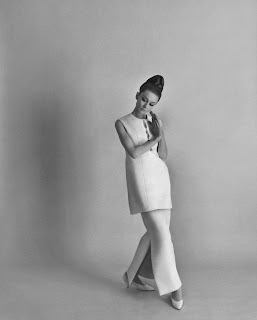
Audrey Hepburn Biography
Audrey Hepburn (4 May 1929 - 20 January 1993) was an Academy Award and Tony Award winning Anglo-Dutch actress of film and theatre, Broadway stage performer, ballerina, fashion model, and humanitarian.
From 1988 until her death in 1993 she served as a UNICEF Goodwill Ambassador and was honoured with the Presidential Medal of Freedom for her work. In 1999 she was ranked as the third greatest female star of all time by the American Film Institute.
By 1944 Hepburn had become a proficient ballerina. She secretly danced for groups of people to collect money for the Dutch resistance. She later said 'the best audience I ever had made not a single sound at the end of my performance'.
The controversy over Hepburn's casting reached its height at the 1964-65 Academy Awards season, when Hepburn was not nominated for best actress while Andrews was, for Mary Poppins. The media tried to play up the rivalry between the two actresses as the ceremony approached, even though both women denied any such bad feelings existed and got along well. Julie Andrews won the award.
Two for the Road was a non-linear and innovative movie about divorce. Director Stanley Donen said that Hepburn was more free and happy than he had ever seen her, and he credited that to Albert Finney. Wait Until Dark in 1967 was a difficult film. It was an edgy thriller in which Hepburn played the part of a blind woman being terrorized. In addition, it was produced by Mel Ferrer and filmed on the brink of their divorce. Hepburn is said to have lost 15 pounds under the stress. On the bright side, she found co-star Richard Crenna to be very funny, and she had a lot to laugh about with director Terence Young. They both joked that he had shelled his favorite star 23 years before; he had been a British Army tank commander during the Battle of Arnhem. Hepburn's performance was nominated for an Academy Award.
Hepburn's last starring role in a cinematic film was with Ben Gazzara in the comedy They All Laughed, directed by Peter Bogdanovich.The film was overshadowed by the murder of one of its stars, Bogdanovich's girlfriend, Dorothy Stratten; the film was released after Stratten's death but only in limited runs. In 1987, she co-starred with Robert Wagner in a tongue-in-cheek made-for-television caper film, Love Among Thieves which borrowed elements from several of Hepburn's films, most notably Charade and How to Steal a Million. The TV-film, which also starred Jerry Orbach as a villain, was only a moderate success, with Hepburn being quoted that she appeared in it just for fun.Hepburn at age fifty-nine in Always
The marriage to Ferrer lasted 14 years, until 5 December 1968; their son was quoted as saying that Hepburn had stayed in the marriage too long. In the later years of the marriage, Ferrer was rumored to have had a girlfriend on the side, while Hepburn was rumoured to have had an affair with her younger Twofor the Road co-star Albert Finney. She denied the rumours, but director Stanley Donen said, "with Albert Finney, she was like a new woman. She and Albie have a wonderful thing together; they are like a couple of kids. When Mel wasn't on set, they sparkled. When Mel was there, it was funny. Audrey and Albie would go rather formal and a little awkward. The couple separated before divorcing. During their separation, Hepburn lost weight. She met Italian psychiatrist Andrea Dotti on a cruise and fell in love with him on a trip to some Greek ruins. She believed she would have many children, and possibly stop working. She married him on 18 January 1969. Although Dotti loved Hepburn and was well-liked by Sean, who called him "fun", Dotti had affairs with younger women. The marriage lasted 13 years and ended in 1982, after Luca and Sean were old enough to handle life with a single mother. Though Hepburn had broken off all contact with Ferrer (she would only speak to him twice in the remainder of her life; at Sean's graduation and first wedding), she remained in touch with Dotti for the benefit of Luca.
In 2003, the United States Postal Service issued a stamp illustrated by Michael J. Deas honoring her as a Hollywood legend and humanitarian. It has a drawing of her which is based on a publicity photo from the movie Sabrina. Hepburn is one of the few non-Americans to be so honored.
The "little black dress" from Breakfast at Tiffany's, designed by Givenchy, sold at a Christie's auction on December 5, 2006, for £467,200 (approximately $920,000), almost seven times its £70,000 pre-sale estimate. This is the highest price paid for a dress from a film. The proceeds went to the City of Joy Aid charity to aid underprivileged children in India. The head of the charity said, "there are tears in my eyes. I am absolutely dumbfounded to believe that a piece of cloth which belonged to such a magical actress will now enable me to buy bricks and cement to put the most destitute children in the world into schools." The dress auctioned off by Christie's was not the one that Hepburn actually wore in the movie. Of the two dresses that Hepburn did wear, one is held in the Givenchy archives, while the other is displayed in the Museum of Costume in Madrid.
In December 1992, one month before her death, Hepburn received the Presidential Medal of Freedom for her work in UNICEF. This is one of the two highest awards a civilian can receive in the United States.










No comments:
Post a Comment